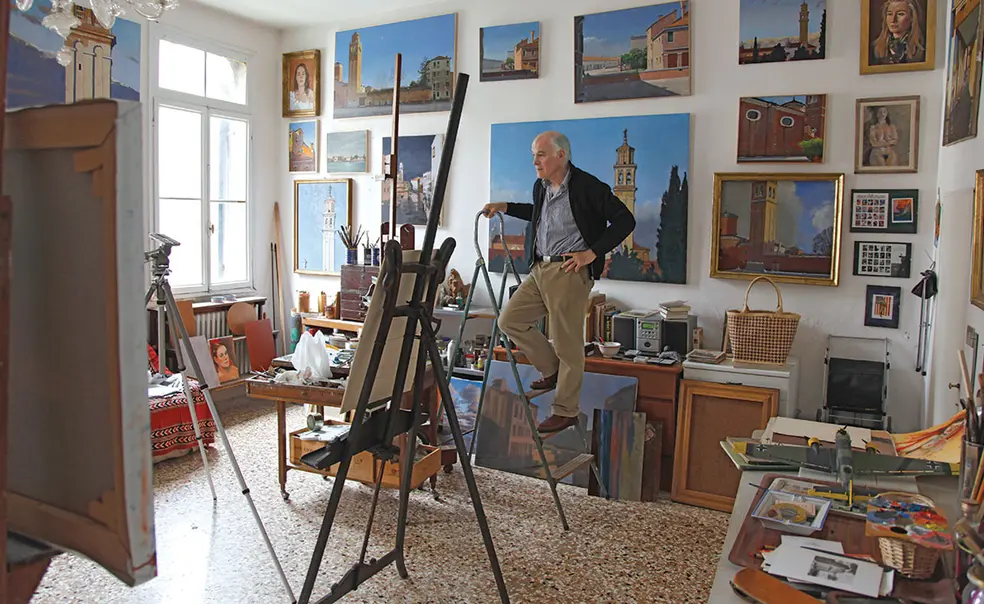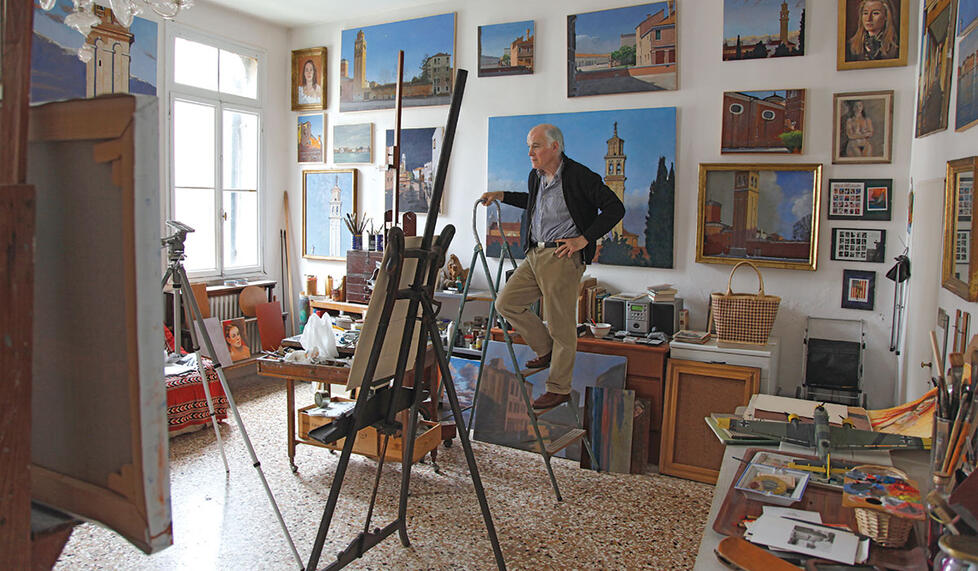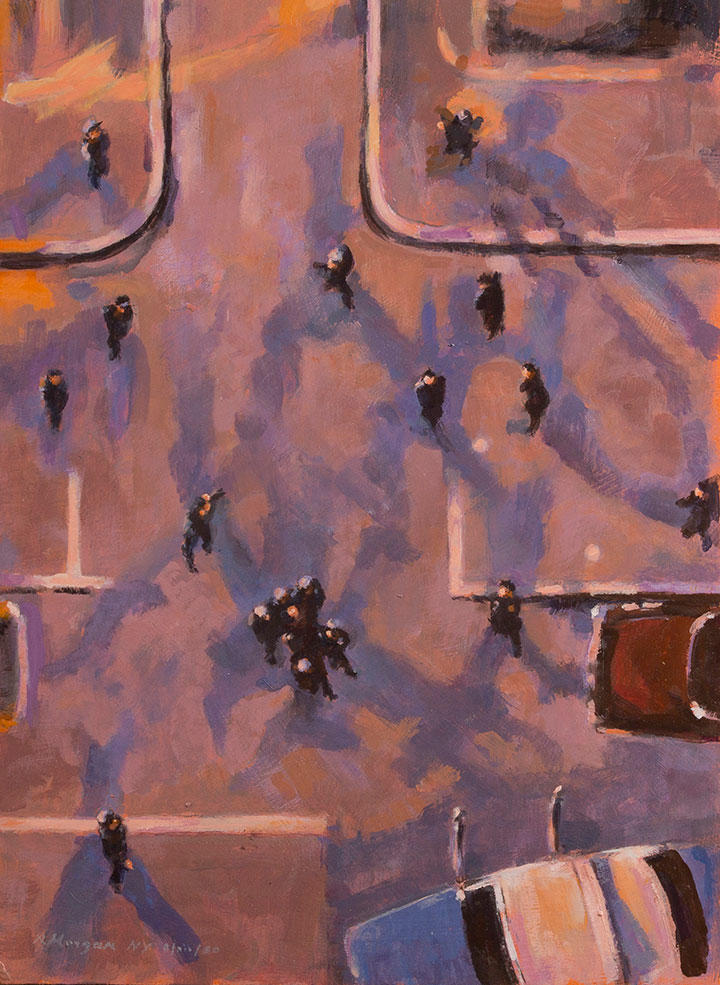The Photograph Not Taken: The Night John Lennon Died
I am an American painter who lives and works in Venice. A few days ago my daughter walked in from school humming “Yellow Submarine.” “Daddy, Daddy, do you know the Beatles? Have you ever seen them? Did you go to a concert? “Well, I knew one of them, whose name was John ... .” But I couldn’t tell her the rest of the story.
In the late 1970s and early ’80s, I lived in New York City with my first wife at the Majestic, 115 Central Park West, Apt. 12G. Our apartment was on the 12th floor with windows running along 72nd Street. The view was commanding: a huge slice of Central Park and the entire southern facade of the Dakota, immortalized by Roman Polanski’s movie Rosemary’s Baby. The brownstone facings and contrasting yellow brick with chimneys, finials, gables, and balconies, and the medallion of the proud Dakota chief — all framed by the glorious New York sky — were our daily bread.
In those days, it was the neighborhood of choice for many performers. Celebrities were neighbors and friends. Zero Mostel, an earthquake of a man with wild black hair and saucer eyes, lived on our elevator line. There were daily sightings of megastars. Then there were John and Yoko, with whom we had a nodding acquaintance. Our windows looked almost directly across to their apartment, which accentuated the familiarity.
In retrospect, the most remarkable thing was the accessibility of these figures. Paparazzi were not part of the street scene. John was affable and cordial with his fans during his walks in the neighborhood. Bodyguards, if they existed, were not in evidence. I remember seeing Mark David Chapman, Lennon’s assassin, sitting on the railing outside the porte-cochère that distinguished the Dakota as a gracious reminder of horse-and-carriage days.
New Yorkers grow used to the incessant rumble and roar of traffic. The sounds blend to a comforting hum. Wailing sirens, honking horns, groaning garbage compressors, screeching brakes, skidding cars, breaking glass, colliding vehicles, yowling people, and the occasional explosion are grace notes in this symphony. What we heard on the night of Dec. 8, 1980, was something else.
As we settled down to watch the 11 o’clock news, a succession of loud detonations brought us to our feet. We ran to my studio window on 72nd and saw a black limousine in the driveway by the Dakota’s porte-cochère. Its lights were on, and a figure was lying by the open rear door. We identified John at a glance by his cowboy boots and round glasses, which reflected the bright lights of the entrance. He lay face up, slightly crumpled, with his feet pointing toward the street. The tremendous crashing that startled us had been the sound of the four or five gunshots reverberating within the passage.
I focused on John's face, the face of a dying man. Then I said to myself, "This isn't my work. Whoever is there deserves a final moment of privacy."
As we looked on helplessly, the door of the limo closed; the car backed out and sped westward on 72nd Street. Almost immediately a police car arrived, and officers piled out with their pistols drawn. John was moving slightly.
There was a camera on the desk in my studio, and I instinctively grabbed it. For the record, it was a Nikkormat EL fitted with a telephoto lens, loaded with high-speed black-and-white film that I often used to snap photos out of the window and around town. The night was clear and the scene was lit up. With the camera cocked and my finger on the shutter release, I focused on John’s face, the face of a dying man. Then I said to myself, “This isn’t my work. Whoever is there deserves a final moment of privacy.” As a painter, though, I had the tools at hand to commemorate what was clearly a historic moment. I set to work and quickly sketched the evolving scene. In less time than it has taken me to describe the events, the police had located and neutralized the gunman and rushed to aid the wounded man.
What I saw was five policemen lifting John and cradling him gently in their arms as they carried him to the police car with the doors still flung open. They carefully slid him onto the back seat and slammed the doors shut. The car raced west on 72nd Street toward the hospital while I madly blocked in the sketch with color and made notes of the details. I stood at the window until I got everything in place. The sense of powerlessness in the face of tragedy prevailed, but I felt that I recorded the event in the right way.
When I tell people: “I was there when John was shot,” they invariably ask: “Did you have a camera?” “Yes, I did,” I respond. “So, where is the photo?” “I didn’t take one. I painted a picture.”














No responses yet